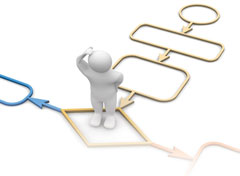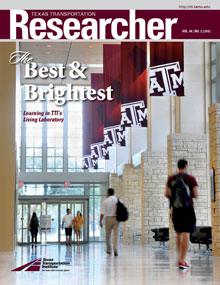
When I became director of the Texas Transportation Institute (TTI) in 2006, I inherited a number of initiatives from our Director Emeritus Herb Richardson.
Herb built on the accomplishments of previous directors and left TTI in excellent shape, especially in terms of our relationships with the academic sector.
Before becoming agency director, Herb served as both dean and vice chancellor of engineering at Texas A&M University and chancellor of The Texas A&M University System. Part of his job involved strengthening the relationship between Texas A&M’s academic institutions and the A&M System agencies. He emphasized that students have the unique opportunity of receiving both first-class instruction and invaluable, hands-on training experiences at the agencies in pursuit of their degrees at Texas A&M. As educators and mentors, we do whatever we can to help students get the most from those experiences.
Creating Well-Rounded Transportation Professionals
Transportation, while an important discipline all its own, cuts across all facets of our daily lives. Transportation planning today recognizes this. While it used to be the philosophy to “build a road and someone will use it,” the modern planning model looks at that road in a smarter way. Questions modern planners ask include:

- Is the road truly needed?
- How does the road’s placement affect mobility?
- Does it connect neighborhoods to schools/shopping/recreational activities?
- What is the economic impact of this particular road and those it connects to?
- Is the road friendly to bicyclists and pedestrians?
- Can the road carry buses and large trucks as easily as sedans and motorcycles?
- Is technology appropriately included in the project?
Clearly, training transportation engineers today requires a different training model than when I went to school.
Solving transportation problems is more challenging than it used to be because the problems themselves are more complex. As a result, employers tell me they look for more than technical knowledge when it comes to hiring freshly minted transportation professionals; they look for the ability to think critically, to innovate — not only to think outside the box, but to question if the box is even constructed correctly in the first place.
This issue of Researcher addresses how TTI continues to cultivate partnerships with Texas A&M and other academic institutions to do just that. Texas A&M hands students the raw materials of knowledge; TTI helps them temper that knowledge in a living laboratory of learning. It’s this symbiotic approach to education that helps enable Texas A&M to shape the brightest young minds into the original thinkers of tomorrow.
Looking to the Future
Because transportation impacts every aspect of modern life, it stands to reason that decisions made by transportation professionals do the same. With that in mind, TTI researchers work closely with our academic partners to create a broader spectrum of knowledge for Texas A&M students to call on.
In TTI’s case, that means giving students the opportunity to participate in research projects and create implementable products and solutions alongside their more experienced mentors. TTI offers Texas A&M students the chance to put theory into practice by doing.
Yet, the value of research is not simply the end product — the new technical specification, the improved process or the innovative technology discovered. It’s also found in the learning experience itself, when those tumblers click into place in the young minds of our students, and they learn to think over, under, around and outside that box of what is already known. It’s that ability to innovate — to redesign the box to be better — that results from TTI’s academic partnerships.
The investment is measurable in dollars and resources; the return is priceless.
